Optimal Control of Multiple Microgrids and Buildings by an Aggregator
Abstract
:1. Introduction and State of the Art
- The development of an optimization-based bi-level architecture for a DSO/aggregator for participation in the balancing market in which the incentives for local users (LUs), together with active and reactive power exchanges, are decision variables.
- The statement of an optimization problem for the optimal management of an aggregator/DSO that considers a simplified prosumers’ model for flexibility assessment, providing set points for DR operations of the LUs, ensuring a certain level of fairness.
- The inclusion of detailed dynamical models for the two main classes of LUs (microgrids and smart buildings) including electrical and thermal elements.
2. The Proposed Decision Architecture
3. The AGG System Model and Optimization Problem
3.1. Representation of the Network Constraints
- set of indexes associated to the distribution grid nodes;
- set of indexes associated to LUs of type building;
- set of indexes associated to LUs of type microgrid;
- set of the indexes associated to all users;
- set of indexes associated to the cogeneration plants of microgrid j, ;
- set of indexes associated to the renewable sources of LU j, ;
- set of indexes associated to rooms in building j, .
- and are conductance and susceptance parameters for line ;
- and are the voltage magnitude and phase at node u, respectively;
- and are the active and the reactive power flows (from u to z), respectively.
3.2. Emulation of the LUs Corresponding to Buildings
3.3. Emulation of the LUs Corresponding to Microgrids
3.4. The Higher-Level Optimization Problem
- (A)
- The first of them is [€], that is the cost relevant to incentives that must be provided to the LUs in order to diminish their own load. Let [€/h], the incentive that the AGG gives to the generic j-th LU per unit time. The following structure of as a function of is assumed:where and are given parameters of suitable physical dimension. Then, can be expressed as:
- (B)
- The second term (actually a benefit) is [€], that is the benefit from the external grid due to the load reduction.To express this term, note that the benefit recieved from the market for the generic time interval is given by a known unit cost [€/kWh] multiplied by the reduction of power [kW] at the point of connection with the main grid. It is supposed that an overall (maximal) reduction [kW] has been agreed in advance.The reduction of power can be formalized as the difference between the forecasted request (in the day-ahead) and the new actual request that has to be determined.That is:
- (C)
- Finally, there is a term called “Assignment Fairness” ( [kW2]) that is introduced to avoid too unbalanced power reductions among the population of LUs. This term can be written as:
4. The LUs’ Optimization Problem
4.1. The Model Used for the Optimization Problem of a Building
- is the thermal capacitance of room i in building j [kWh/K];
- is external temperature [K];
- is the thermal resistance between room i in building j and the external environment [k/kW];
- is the thermal resistance between room i and room r in building j [K/kW];
- is an entry of the adjacency matrix: It is equal to 1 if room i is adjacent to room r and 0 otherwise [adim];
- is a coefficient equal to 1 if room i is adjacent to external environment and 0 otherwise [adim];
- is the thermal power (unrestricted in sign) provided by heat pumps in room i in building j [kW].
- is the power flow form the storage element corresponding to the solution of the local problem;
- is the actual power flow from the main grid to the LU j, determined by the solution of the local problem;
- is the building load, expressed in a more detailed way with respect to (14), that is:
- -
- fixed consumption ;
- -
- power necessary to feed electrical vehicles ;
- -
- power necessary to feed washing machines .
4.2. The Optimization Problem for a Building
4.3. The Model Used for the Optimization Problem of a Microgrid
- is the active power coming from the controllable microturbine h in microgrid j;
- is the active power that is injected from local renewable energy sources of kind l;
- is the active power (unrestricted in sign) drawn from the storage;
- is the power coming from the grid;
- is the power requested by heat pumps;
- is the fixed electrical demand;
- is the power consumed by electric vehicles.
- is the thermal power produced by the (unique) gas-fed boiler;
- is the thermal power from the l-th renewable energy source;
- is the thermal power produced by the h-th co-generative microturbine;
- is the thermal power consumed by the (unique) chiller;
4.4. The Optimization Problem for a Microgrid
5. Application to a Case Study
5.1. The Available Data and Demands
5.2. Results for the AGG Optimization Problem
5.3. Lower-Level Results: Building-Type LUs
5.4. Lower-Level Results: Microgrid Type LU
6. Conclusions
Author Contributions
Funding
Conflicts of Interest
Nomenclature
| Sets: set of time instants; set of indexes associated to the distribution grid nodes; set of indexes associated to LUs of type building; set of indexes associated to LUs of type microgrid; set of the indexes associated to all users; set of indexes associated to the cogeneration plants of microgrid j, ; set of indexes associated to the renewable sources of LU j, ; set of indexes associated to rooms in building j, . Decision Variables: = active power flow for line at time t [p.u.]; = active power flow for line at time t [kW]; = reactive power flow for line at time t [p.u.]; = reactive power flow for line at time t [kvar]; = voltage magnitude at node u at time t [p.u.]; = phase magnitude at node u at time t [p.u.]; = active power exchange from the node u to the LU at time t [kW]; = reactive power exchange from the node u to the LU at time t [kvar]; = active power exchange form the slack node to the main grid at time t [kW]; = reactive power exchange from the slack node to the main grid at time t [kvar]; = State of Charge of the storage element j at time t; = reactive power from renewables of the j-th LU at time t [kvar]; = active power exchange with the storage of the j-th LU at time t [kW]; = reactive power exchange with the storage of the j-th LU at time t [kvar]; = active power decrease requested by the AGG to the j-th LU at time t [kW]; = electrical power provided by heat pumps in the j-th LU at time t [kW]; =active power demand of the j-th LU at time t [kW]; = temperature of the building j at time t [K]; = power produced from cogeneration plants in microgrid j at time t [kW]; =thermal power produced by the boiler in microgrid j at time t [kW]; = thermal power produced by the cogeneration plants in microgrid j at time t [kW]; = actual power reduction at the slack node at time t [kW]; = incentive that the AGG gives to the generic j-th LU per unit time [€/h]; = actual power flow (calculated at the lower level) from the grid to the LU j at time t [kW]; = temperature of the i-th room of building j at time t [K]; = same physical meaning as in the lower-level problem [kW]; = same physical meaning as in the lower-level problem [kW]; = same physical meaning as in the lower-level problem [kW]; = power necessary to feed electrical vehicles in the j-th LU at time t [kW]; = power necessary to feed washing machines in building j at time t [kW]; = deferrable fraction of [kW]; = actual reactive power flow (calculated at the lower level) from the grid to the microgrid j at time t [kvar]; = active power coming from the cogenerative microturbine h in microgrid j at time t [kW]; = thermal power produced by the h-th cogenerative microturbine in microgrid j at time t [kW]; = thermal power produced by the (unique) gas-fed boiler in microgrid j at time t [kW]; = reactive power coming from the renewable plant l in microgrid j at time t [kvar]; Parameters = conductance for line ; = susceptance for line ; = coefficient expressing the connection of LU j and node u; = minimum value of a physical quantity ; = maximum value of a physical quantity ; = time interval length [h] = active power from renewables of the j-th LU at time t; [kW] = loss coefficient in the storage of the j-th LU; = capacity of the storage of the j-th LU [kWh]; = efficiency parameter of the storage of the j-th LU; = charging efficiency parameter of the storage of the j-th LU; = discharging efficiency parameter of the storage of the j-th LU; = reactive power demand of the j-th LU at time t [kvar]; = maximum active power decrease over the entire day in the j-th LU [kW]; = active power load without the heat pumps in the j-th LU at time t [kW]; = external temperature at time t [K]; = thermal capacitance in building j [kWh/K]; = resistance between building j and the external environment [K/kW]; =heat pump efficiency coefficient; = heat pump efficiency coefficient in heating mode; = heat pump efficiency coefficient in heating mode; = constant specifying whether the heat pump operates in heating or cooling mode; = efficiency of the chiller; = thermal power produced by renewables in microgrid j at time t [kW]; = thermal demand (heating) in microgrid j at time t [kW]; = thermal demand (cooling) in microgrid j at time t [kW]; = thermal power needed to feed the (unique) chiller in microgrid j at time t [kW]; = tradeoff coefficient [€/kW2]; = parameter of the cost function of the j-th LU [€/h∙kW2]; = parameter of the cost function of the j-th LU [€/kWh]; = parameter of the cost function of the j-th LU [€/h]; = overall (maximal) power reduction at the slack node at time t [kW]; = day-ahead power forecast regarding the slack node at time t [kW]; = benefit from the market for the generic time interval at time t [€/kWh]; = unit cost coefficient at time t [€/kWh]; = thermal capacitance of room i in building j [kWh/K]; = electrical power provided by heat pumps in room i in building j at time t [kW]; = thermal resistance between room i in building j and the external environment [K/kW]; = entry of the adjacency matrix; = is the thermal resistance between room i and room r in building j [K/kW]; = entry of the adjacency matrix regarding rooms i and r in building j; = fixed electrical demand in the lower-level problem in the j-th LU at time t [kW]; = total electrical energy demand for electrical vehicles in the j-th LU [kWh]; = fixed fraction of [kW]; = total deferrable energy demand for washing machines in building j [kWh]; = parameter characteristic of the h-th cogenerative microturbine; = active power coming from the renewable plant l in microgrid j at time t [kW]; = fixed amount of reactive power corresponding to the heat pumps and the electric load [kvar]; = thermal power from the l-th renewable energy source in microgrid j at time t [kW]; Objective function: = objective function of the AGG optimization problem; = objective function of building j; = objective function of microgrid j; = cost of providing incentives to the LUs [€]; = benefit from the external grid due to the load reduction [€]; = “Assignment Fairness” [kW2]; |
References
- Carreiro, A.M.; Jorge, H.M.; Antunes, C.H. Energy management systems aggregators: A literature survey. Renew. Sustain. Energy Rev. 2017, 73, 1160–1172. [Google Scholar] [CrossRef]
- Hill, C.A.; Such, M.C.; Chen, D.; Gonzalez, J.; Grady, W.M.K. Battery energy storage for enabling integration of distributed solar power generation. IEEE Trans. Smart Grid 2012, 3, 850–857. [Google Scholar] [CrossRef]
- Goncalves Da Silva, P.; Ilic, D.; Karnouskos, S. The Impact of Smart Grid Prosumer Grouping on Forecasting Accuracy and Its Benefits for Local Electricity Market Trading. IEEE Trans. Smart Grid 2014, 5, 402–410. [Google Scholar] [CrossRef]
- Wang, B.; Sechilariu, M.; Locment, F. Intelligent DC microgrid with smart grid communications: Control strategy consideration and design. IEEE Trans. Smart Grid 2012, 3, 2148–2156. [Google Scholar] [CrossRef]
- Grijalva, S.; Tariq, M.U. Prosumer-based smart grid architecture enables a flat, sustainable electricity industry. In Proceedings of the ISGT 2011, Anaheim, CA, USA, 17–19 January 2011; pp. 1–6. [Google Scholar]
- Fontenot, H.; Dong, B. Modeling and control of building-integrated microgrids for optimal energy management—A review. Appl. Energy 2019, 254, 113689. [Google Scholar] [CrossRef]
- Li, D.; Chiu, W.Y.; Sun, H.; Poor, H.V. Multiobjective optimization for demand side management program in smart grid. IEEE Trans. Ind. Informatics 2018, 14, 1482–1490. [Google Scholar] [CrossRef] [Green Version]
- Srinivasan, S.; Palmie, G.; Srinivasan, S.; Palmieri, G.; Del Vecchio, C.; Glielmo, L. Demand Side Management for heating controls in Microgrids. IFAC-PapersOnLine 2016, 49, 611–616. [Google Scholar]
- Asensio, M.; Muñoz-Delgado, G.; Contreras, J. Bi-level approach to distribution network and renewable energy expansion planning considering demand response. IEEE Trans. Power Syst. 2017, 32, 4298–4309. [Google Scholar] [CrossRef]
- Ferro, G.; Laureri, F.; Minciardi, R.; Robba, M. Optimal Integration of Interconnected Buildings in a Smart Grid: A Bi-level Approach. In Proceedings of the 2017 UKSim-AMSS 19th International Conference on Computer Modelling & Simulation (UKSim), Cambridge, UK, 5–7 April 2017; pp. 155–160. [Google Scholar]
- Kovács, A. Bilevel programming approach to demand response management with day-ahead tariff. J. Mod. Power Syst. Clean Energy 2019, 7, 1632–1643. [Google Scholar] [CrossRef] [Green Version]
- Jia, Y.; Mi, Z.; Yu, Y.; Song, Z.; Sun, C. A bilevel model for optimal bidding and offering of flexible load aggregator in day-ahead energy and reserve markets. IEEE Access 2018, 6, 67799–67808. [Google Scholar] [CrossRef]
- Fernandez-Blanco, R.; Arroyo, J.M.; Alguacil, N.; Guan, X. Incorporating Price-Responsive Demand in Energy Scheduling Based on Consumer Payment Minimization. IEEE Trans. Smart Grid 2015, 7, 817–826. [Google Scholar] [CrossRef]
- Najafi, A.; Falaghi, H.; Contreras, J.; Ramezani, M. A Stochastic Bilevel Model for the Energy Hub Manager Problem. IEEE Trans. Smart Grid 2016, 8, 2394–2404. [Google Scholar] [CrossRef]
- Feijoo, F.; Das, T.K. Emissions control via carbon policies and microgrid generation: A bilevel model and Pareto analysis. Energy 2015, 90, 1545–1555. [Google Scholar] [CrossRef]
- Wei, W.; Wang, D.; Jia, H.; Wang, C.; Zhang, Y.; Fan, M. Hierarchical and distributed demand response control strategy for thermostatically controlled appliances in smart grid. J. Mod. Power Syst. Clean Energy 2017, 5, 30–42. [Google Scholar] [CrossRef] [Green Version]
- Bui, V.H.; Hussain, A.; Kim, H.M. A multiagent-based hierarchical energy management strategy for multi-microgrids considering adjustable power and demand response. IEEE Trans. Smart Grid 2018, 9, 1323–1333. [Google Scholar] [CrossRef]
- Nazif Faqiry, M.; Das, S. Distributed bilevel energy allocation mechanism with grid constraints and hidden user information. IEEE Trans. Smart Grid 2017, 10, 1869–1879. [Google Scholar] [CrossRef]
- Saez-Gallego, J.; Kohansal, M.; Sadeghi-Mobarakeh, A.; Morales, J.M. Optimal Price-Energy demand bids for aggregate price-responsive loads. IEEE Trans. Smart Grid 2018, 9, 5005–5013. [Google Scholar] [CrossRef] [Green Version]
- Soares, J.; Canizes, B.; Ghazvini, M.A.F.; Vale, Z.; Venayagamoorthy, G.K. Two-Stage Stochastic Model Using Benders’ Decomposition for Large-Scale Energy Resource Management in Smart Grids. IEEE Trans. Ind. Appl. 2017, 53, 5905–5914. [Google Scholar] [CrossRef]
- Shao, C.; Ding, Y.; Wang, J.; Song, Y. Modeling and integration of flexible demand in heat and electricity integrated energy system. IEEE Trans. Sustain. Energy 2018, 9, 361–370. [Google Scholar] [CrossRef]
- Asensio, M.; De Quevedo, P.M.; Muñoz-Delgado, G.; Contreras, J. Joint distribution network and renewable energy expansion planning considering demand response and energy storage-part I: Stochastic programming model. IEEE Trans. Smart Grid 2018, 9, 655–666. [Google Scholar] [CrossRef]
- Asensio, M.; De Quevedo, P.M.; Muñoz-Delgado, G.; Contreras, J. Joint distribution network and renewable energy expansion planning considering demand response and energy storage-part II: Numerical results. IEEE Trans. Smart Grid 2018, 9, 667–675. [Google Scholar] [CrossRef]
- Chen, S.; Cheng, R.S. Operating reserves provision from residential users through load aggregators in smart grid: A game theoretic approach. IEEE Trans. Smart Grid 2017, 10, 1588–1598. [Google Scholar] [CrossRef]
- Cheng, P.-H.; Huang, T.-H.; Chien, Y.-W.; Wu, C.-L.; Tai, C.-S.; Fu, L.-C. Demand-side management in residential community realizing sharing economy with bidirectional PEV while additionally considering commercial area. Int. J. Electr. Power Energy Syst. 2020, 116, 105512. [Google Scholar] [CrossRef]
- De Zotti, G.; Pourmousavi, S.A.; Morales, J.M.; Madsen, H.; Poulsen, N.K. Consumers’ Flexibility Estimation at the TSO Level for Balancing Services. IEEE Trans. Power Syst. 2019, 34, 1918–1930. [Google Scholar] [CrossRef] [Green Version]
- Aghajani, G.R.; Shayanfar, H.A.; Shayeghi, H. Demand side management in a smart micro-grid in the presence of renewable generation and demand response. Energy 2017, 126, 622–637. [Google Scholar] [CrossRef]
- Salah, F.; Henriquez, R.; Wenzel, G.; Olivares, D.E.; Negrete-Pincetic, M.; Weinhardt, C. Portfolio design of a demand response aggregator with satisficing consumers. IEEE Trans. Smart Grid 2019, 10, 2475–2484. [Google Scholar] [CrossRef]
- Delfino, F.; Ferro, G.; Robba, M.; Rossi, M. An Energy Management Platform for the Optimal Control of Active and Reactive Powers in Sustainable Microgrids. IEEE Trans. Ind. Appl. 2019, 55, 7146–7156. [Google Scholar] [CrossRef]
- Bracco, S.; Brignone, M.; Delfino, F.; Pampararo, F.; Rossi, M.; Ferro, G.; Robba, M. An Optimization Model for Polygeneration Microgrids with Renewables, Electrical and Thermal Storage: Application to the Savona Campus. In Proceedings of the 2018 IEEE International Conference on Environment and Electrical Engineering and 2018 IEEE Industrial and Commercial Power Systems Europe (EEEIC/I&CPS Europe), Palermo, Italy, 12–15 June 2018; pp. 1–6. [Google Scholar]
- Yao, J.; Costanzo, G.T.; Zhu, G.; Wen, B. Power Admission Control with Predictive Thermal Management in Smart Buildings. IEEE Trans. Ind. Electron. 2015, 62, 2642–2650. [Google Scholar] [CrossRef]
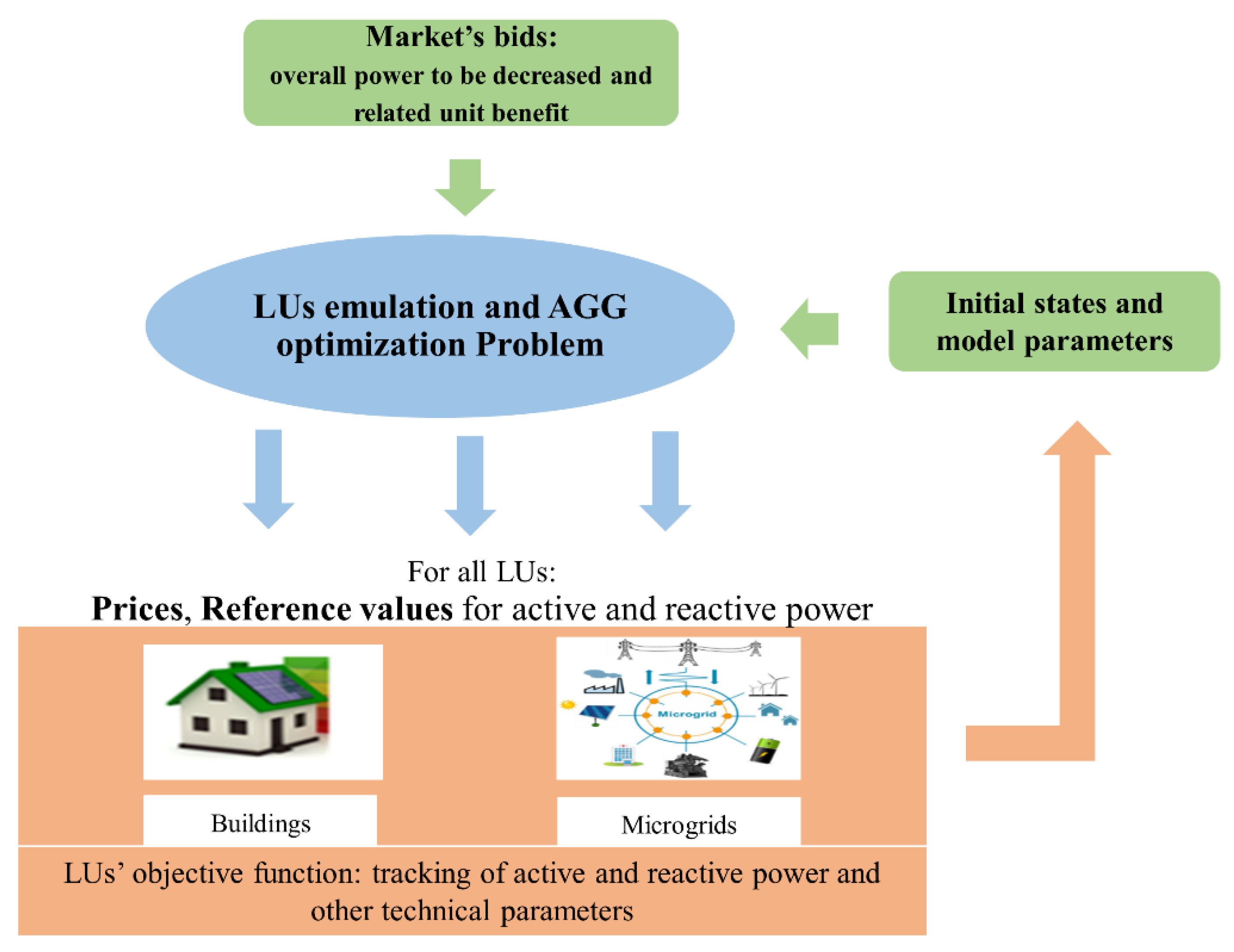
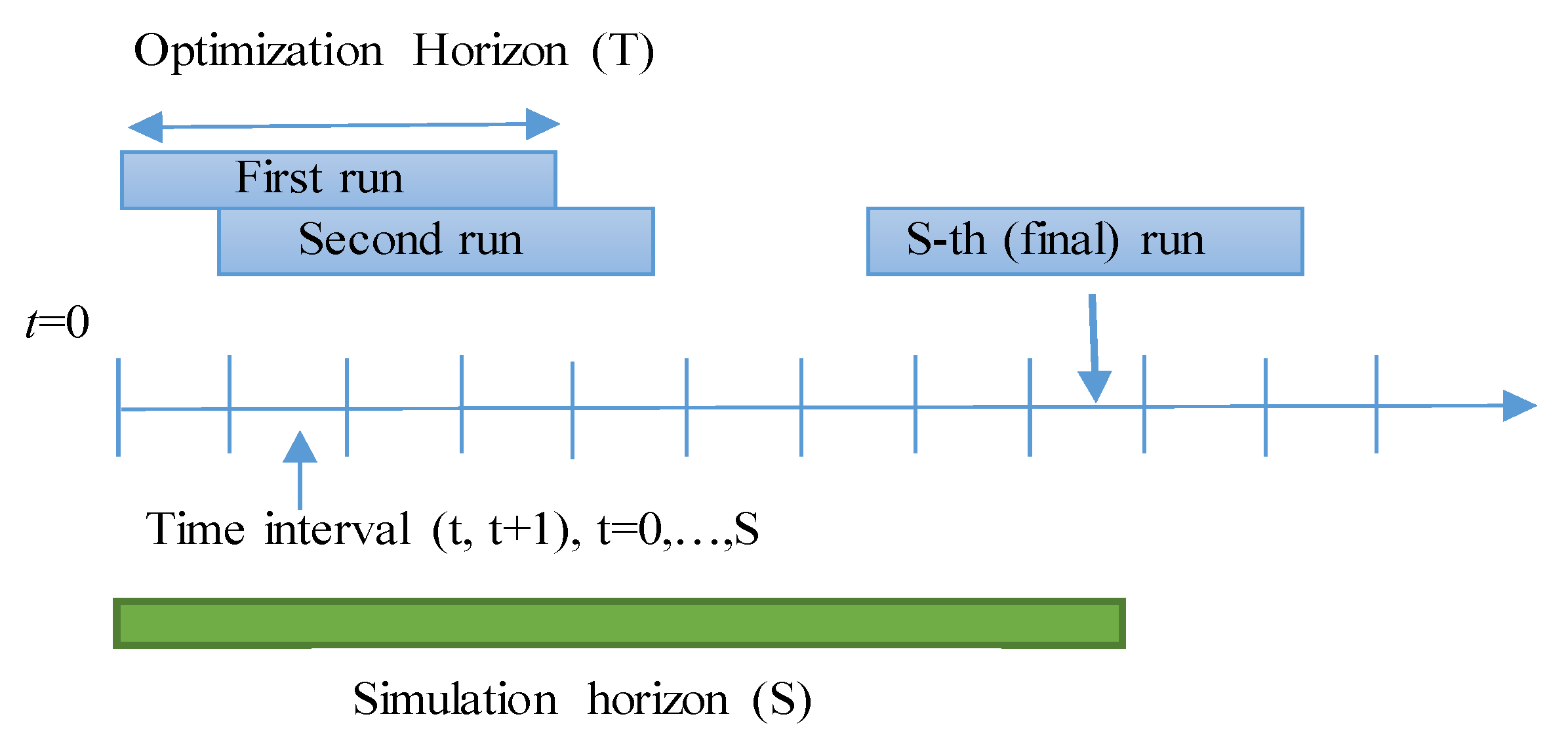


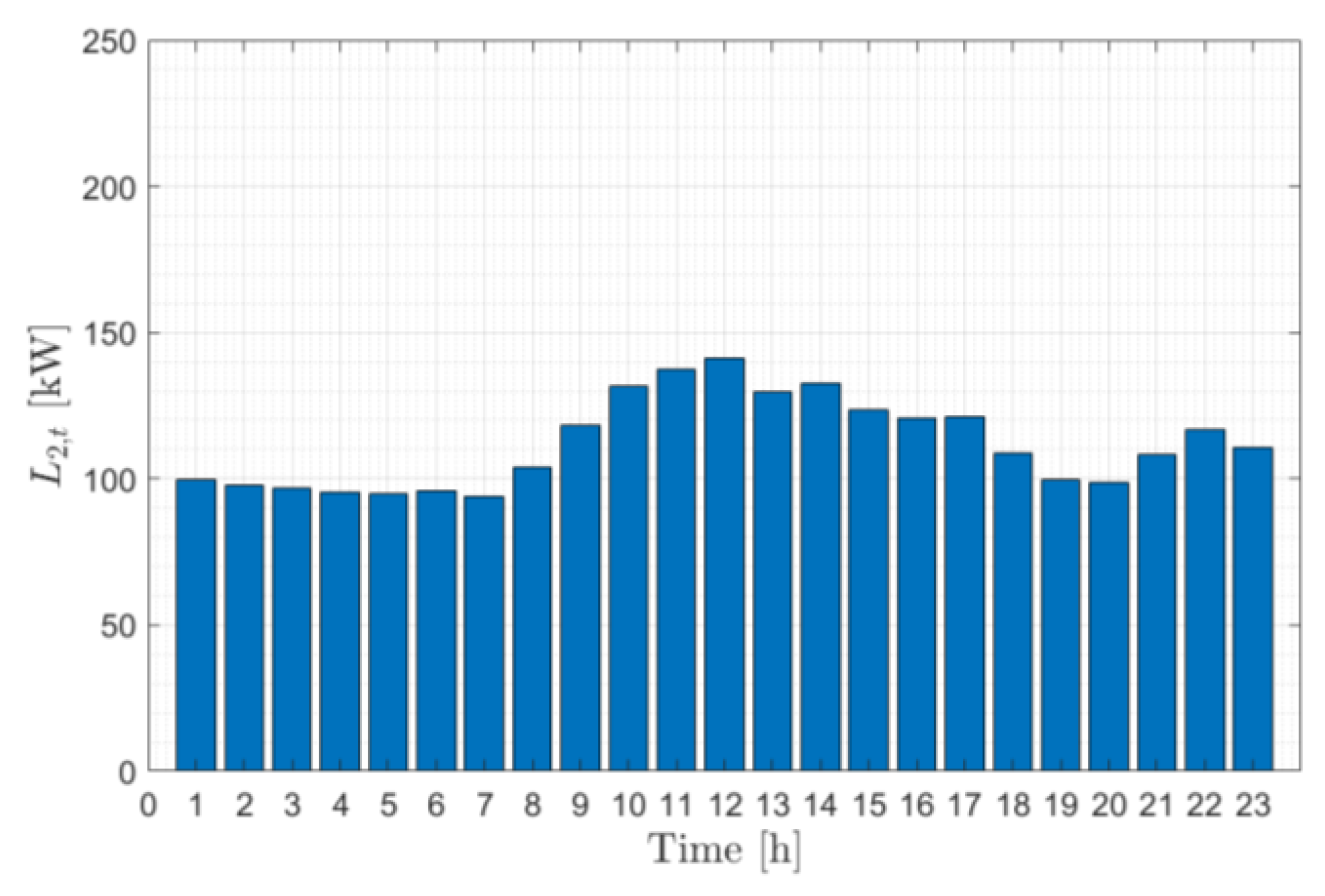
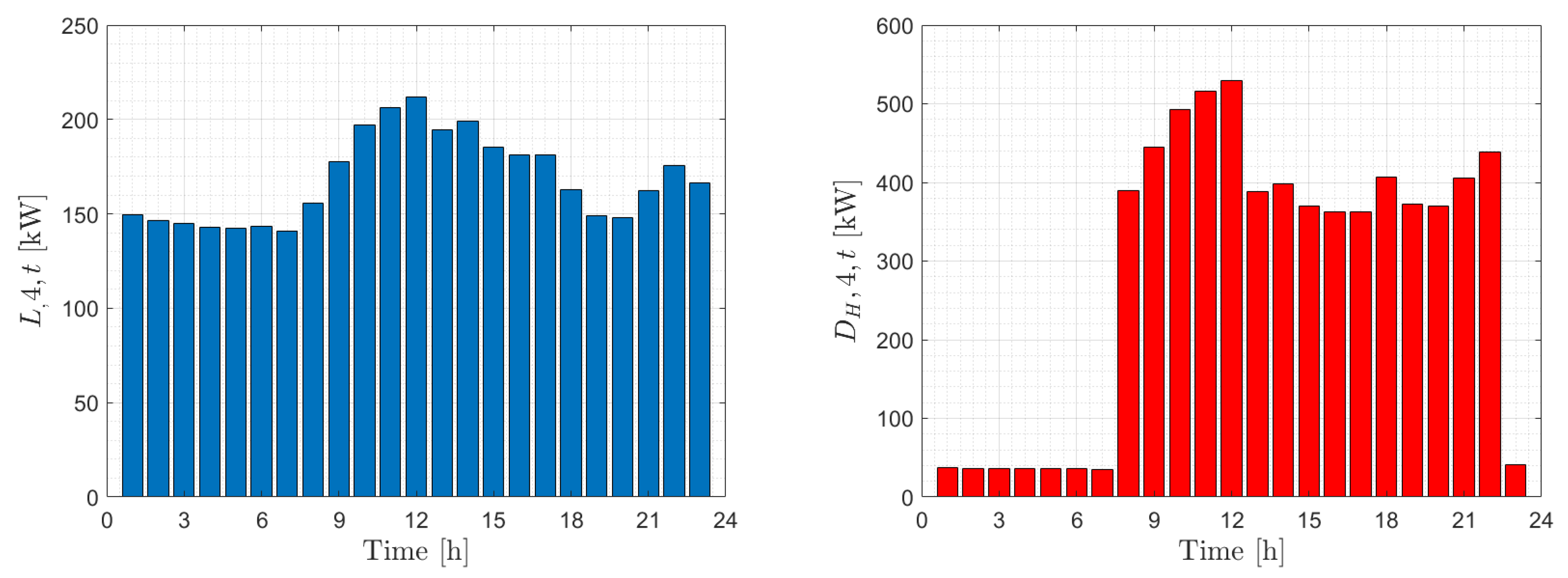
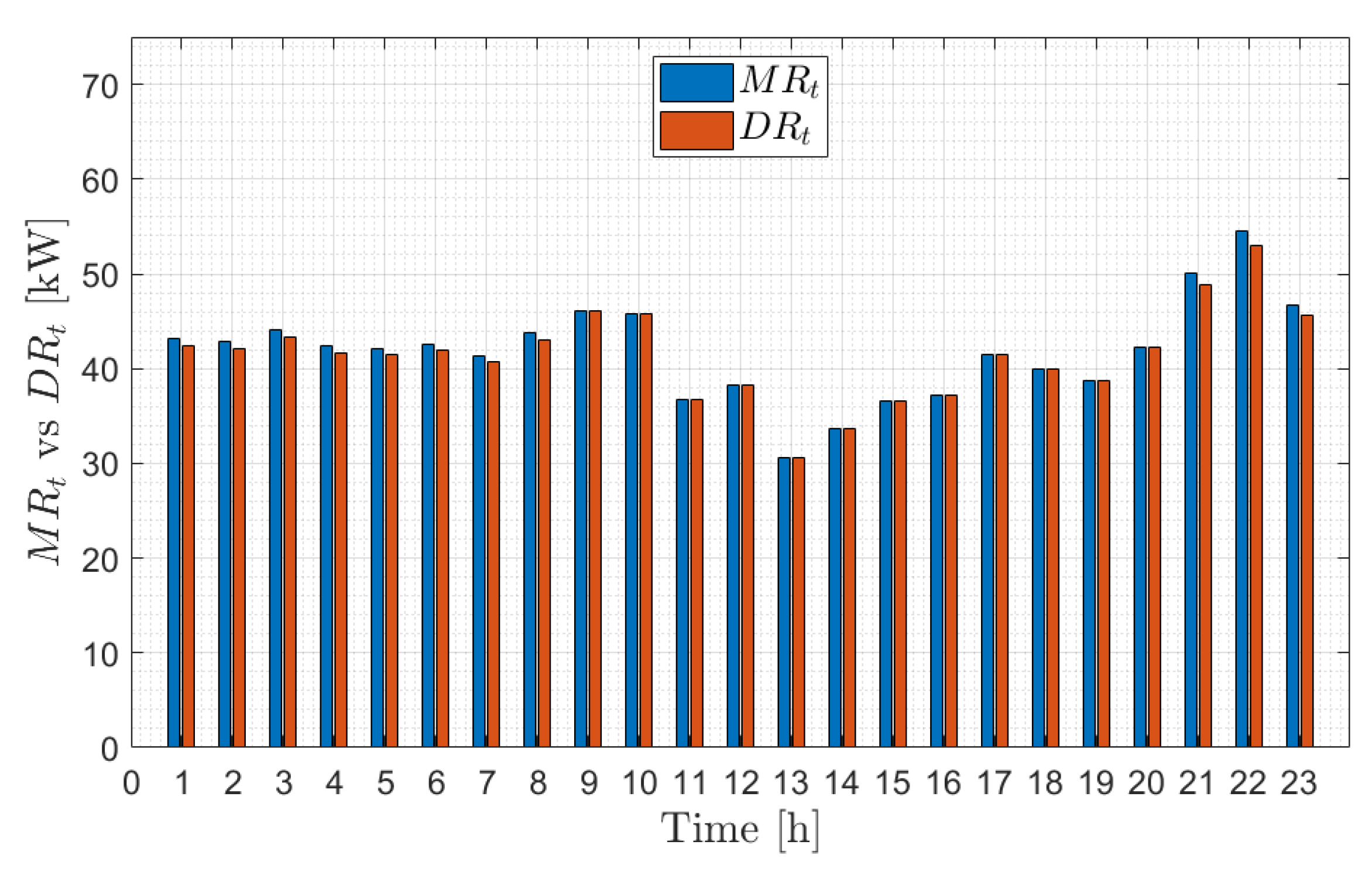
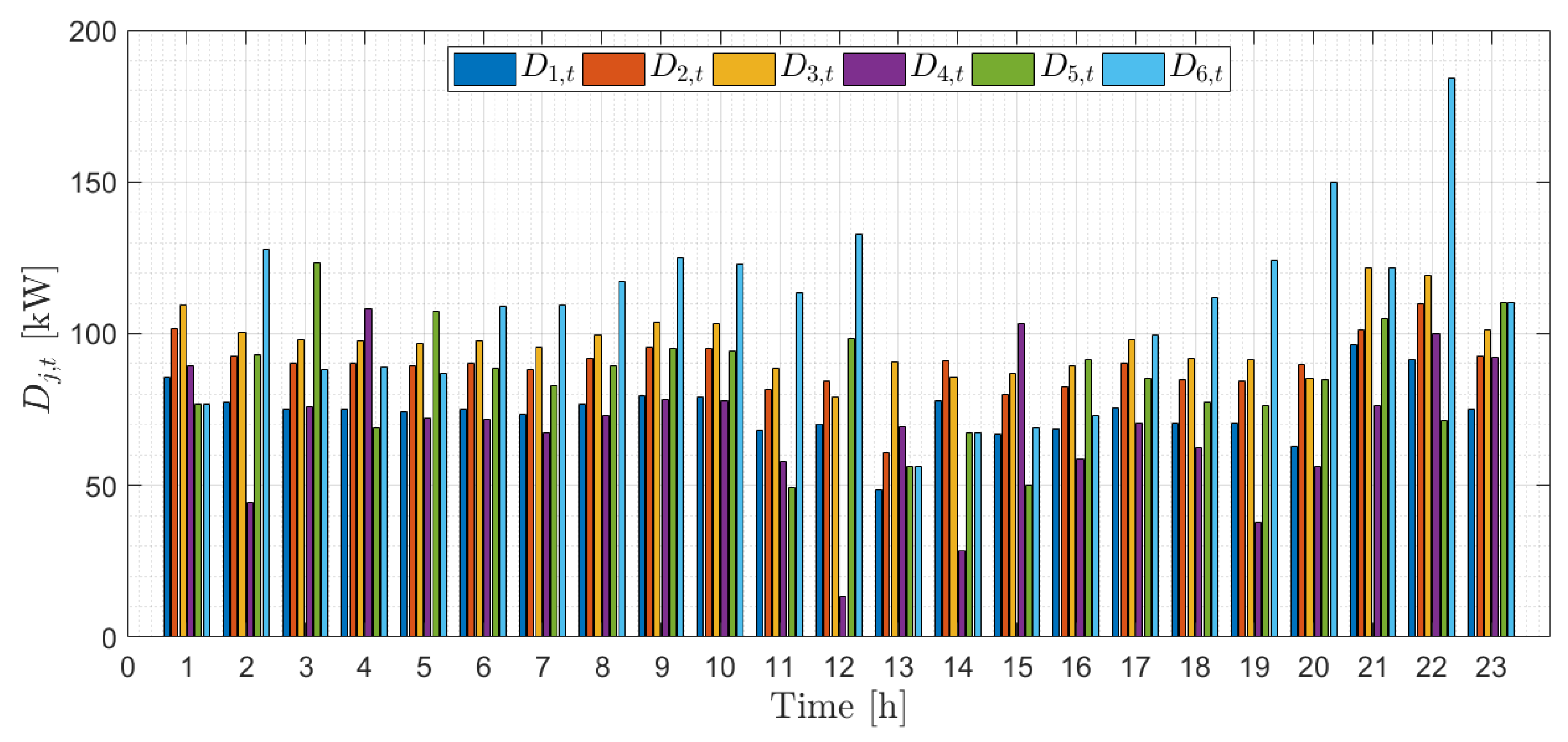

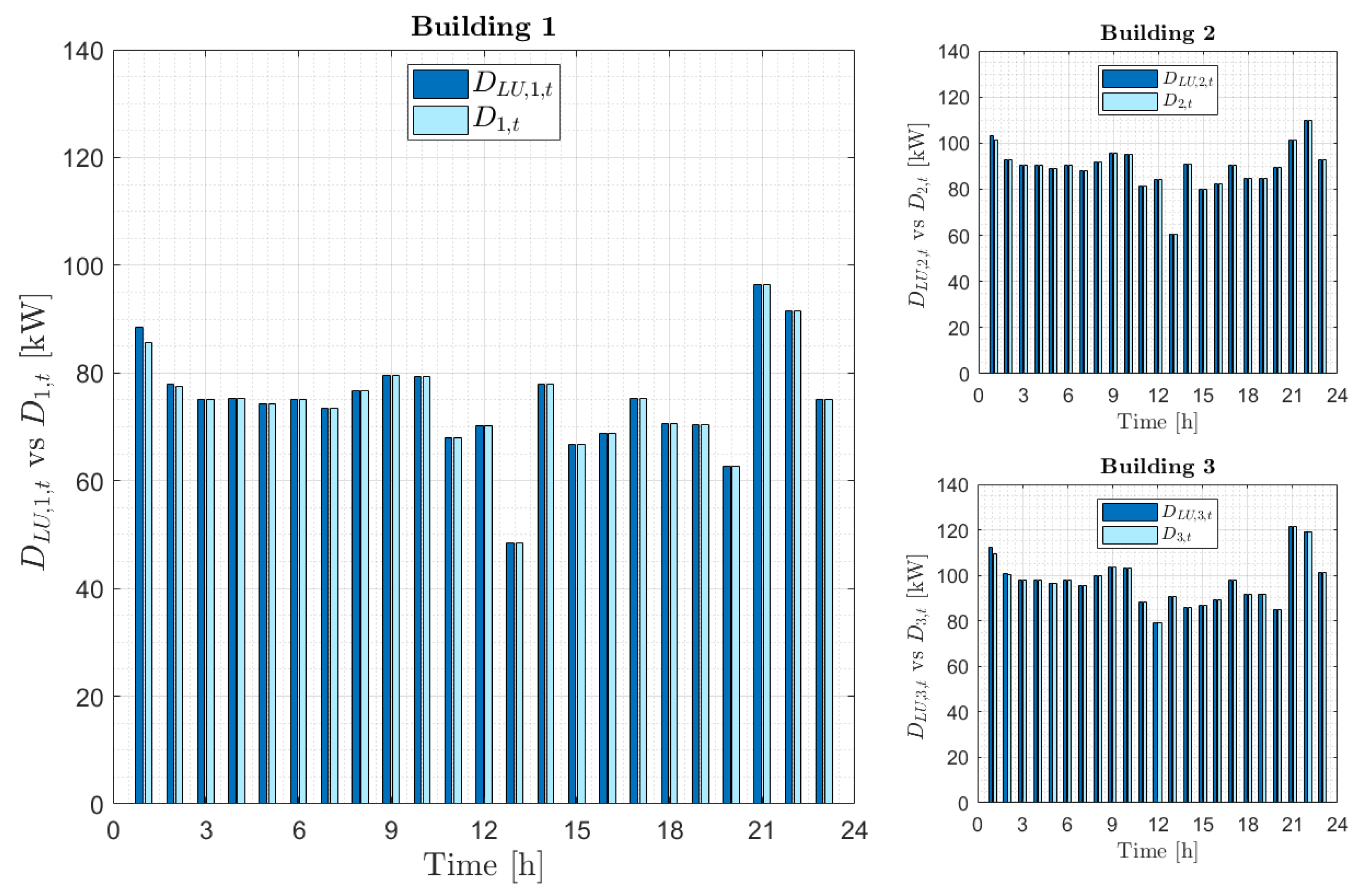
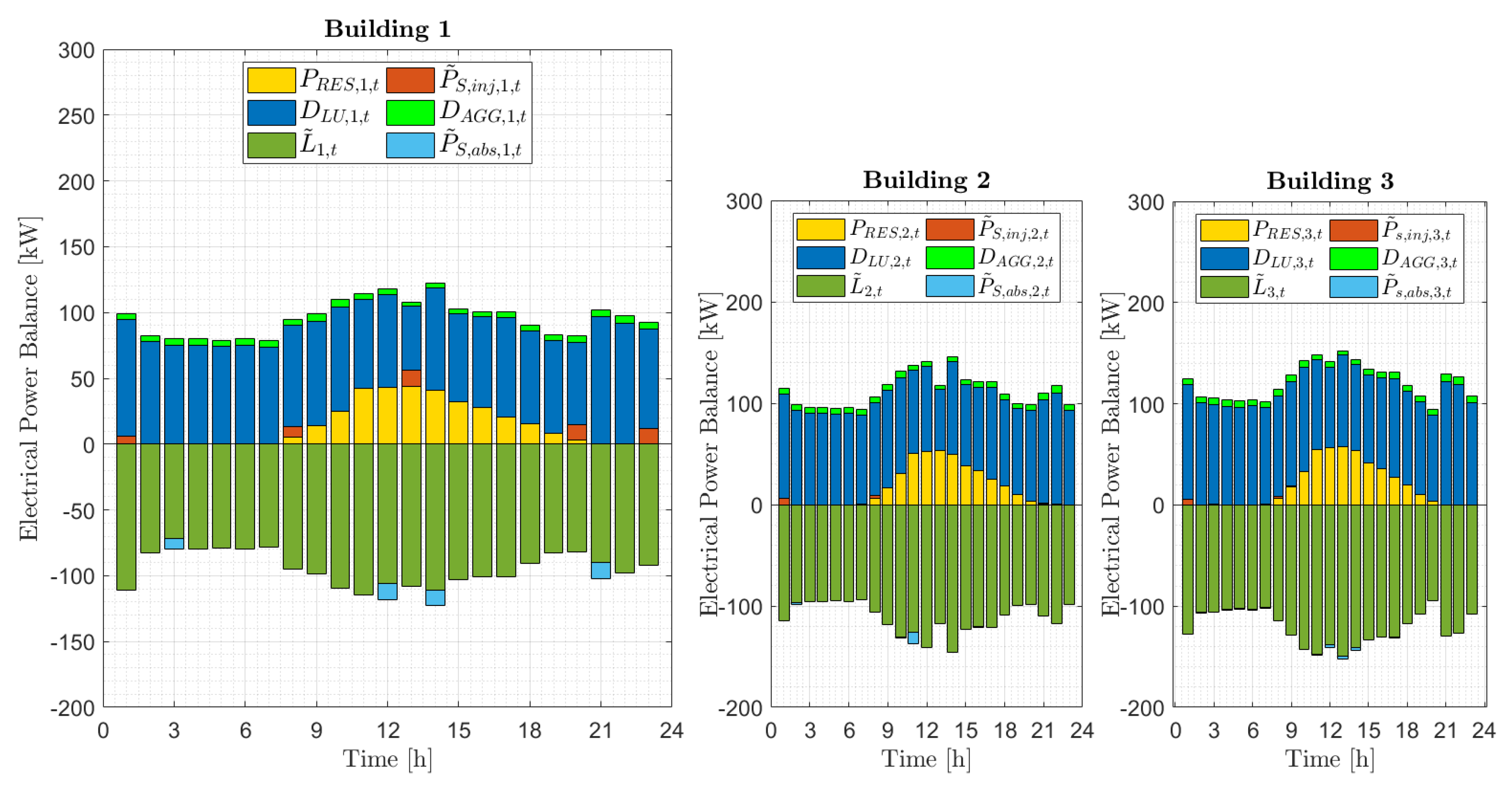
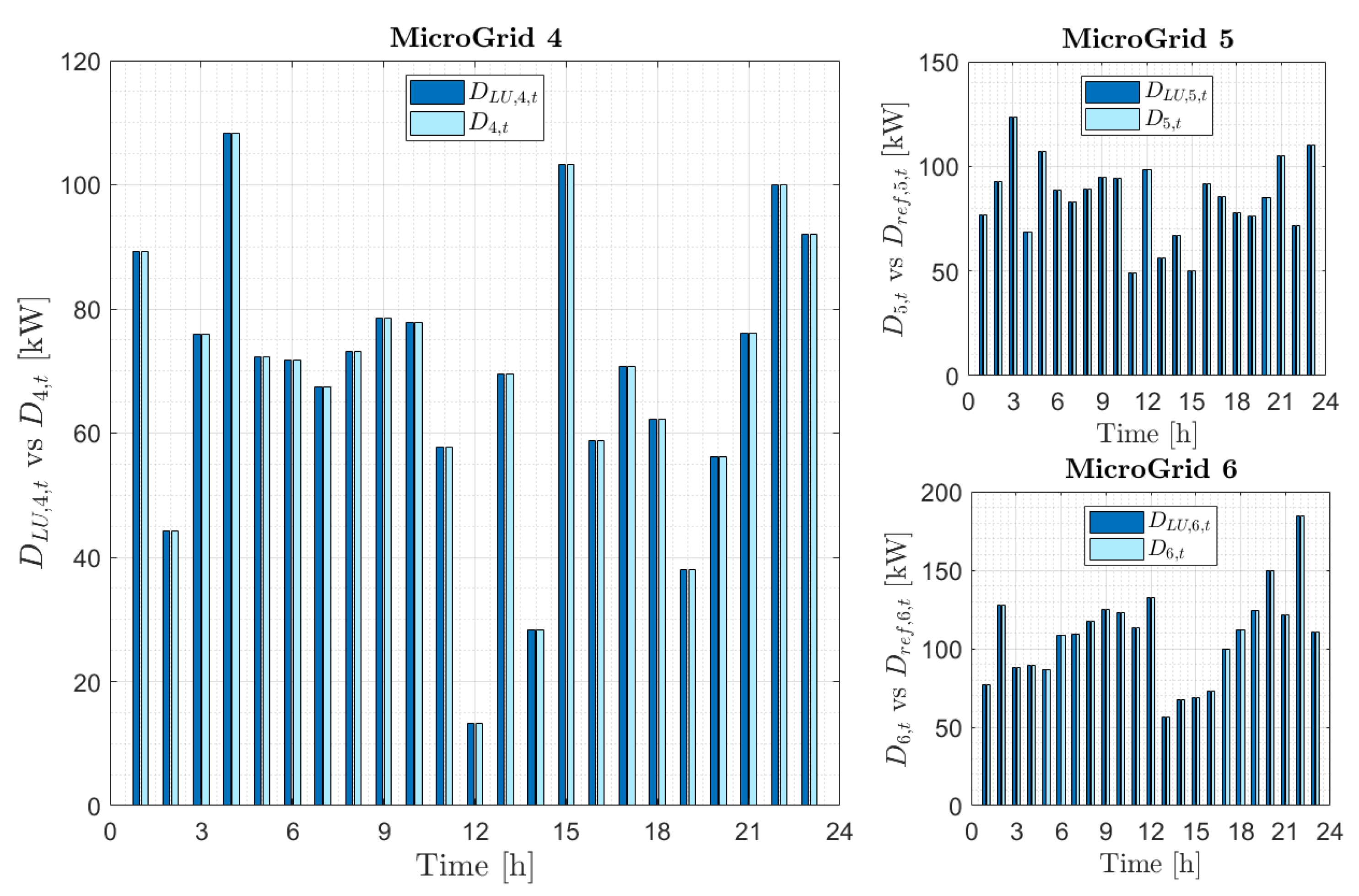
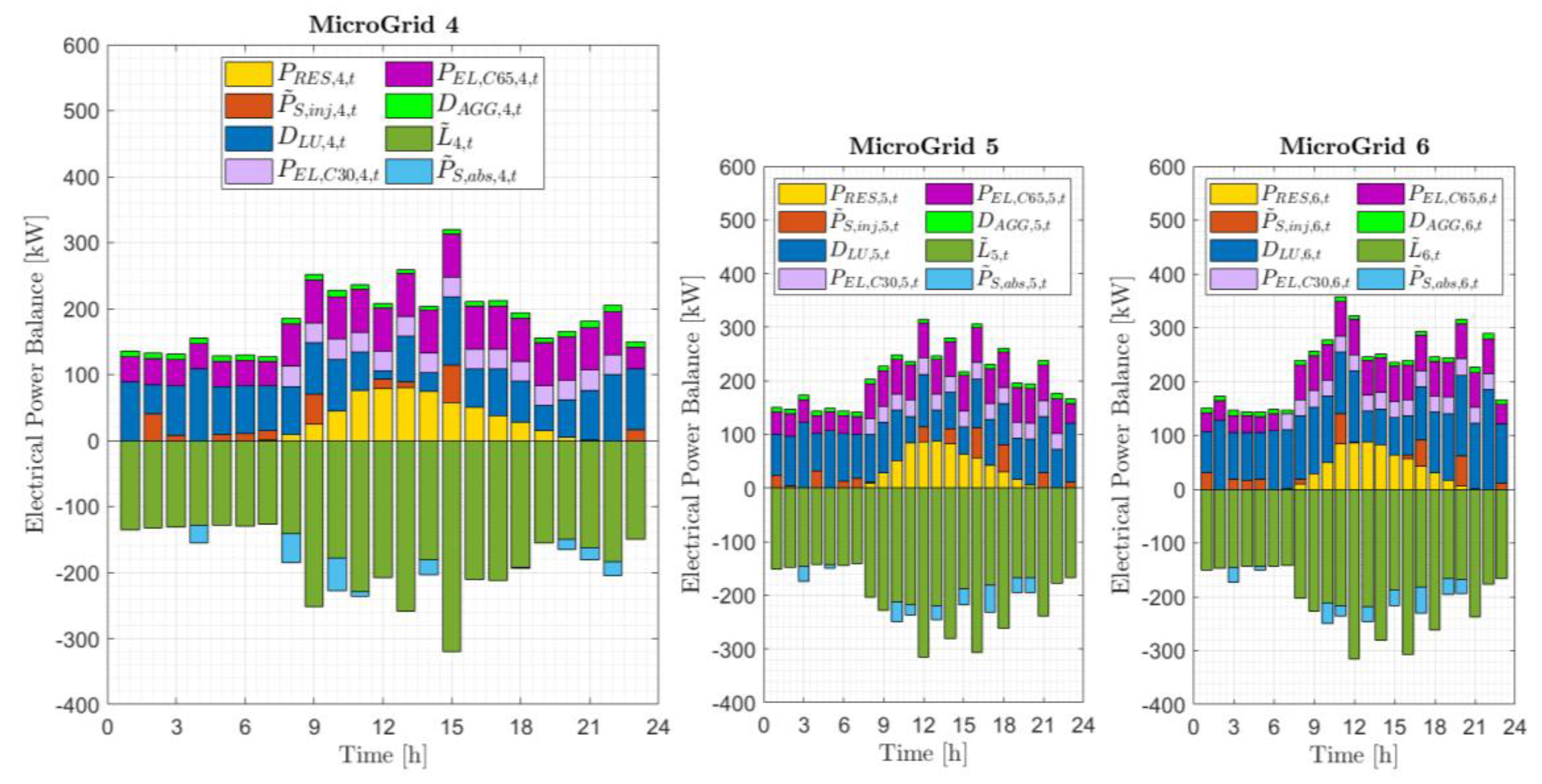
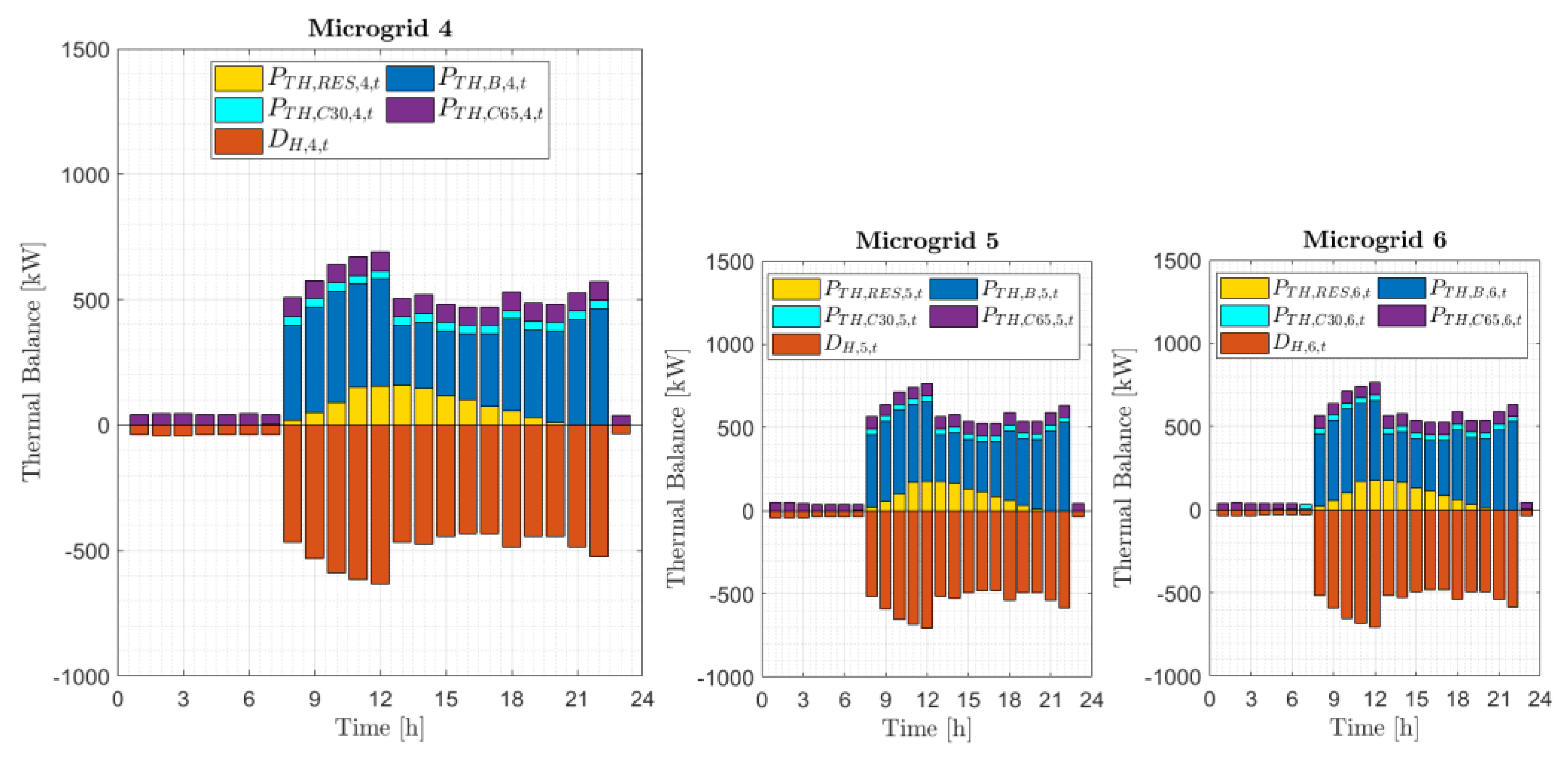
© 2020 by the authors. Licensee MDPI, Basel, Switzerland. This article is an open access article distributed under the terms and conditions of the Creative Commons Attribution (CC BY) license (http://creativecommons.org/licenses/by/4.0/).
Share and Cite
Ferro, G.; Minciardi, R.; Parodi, L.; Robba, M.; Rossi, M. Optimal Control of Multiple Microgrids and Buildings by an Aggregator. Energies 2020, 13, 1058. https://doi.org/10.3390/en13051058
Ferro G, Minciardi R, Parodi L, Robba M, Rossi M. Optimal Control of Multiple Microgrids and Buildings by an Aggregator. Energies. 2020; 13(5):1058. https://doi.org/10.3390/en13051058
Chicago/Turabian StyleFerro, Giulio, Riccardo Minciardi, Luca Parodi, Michela Robba, and Mansueto Rossi. 2020. "Optimal Control of Multiple Microgrids and Buildings by an Aggregator" Energies 13, no. 5: 1058. https://doi.org/10.3390/en13051058




